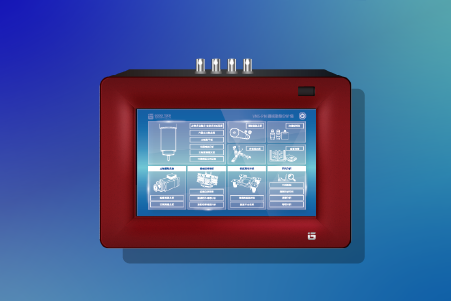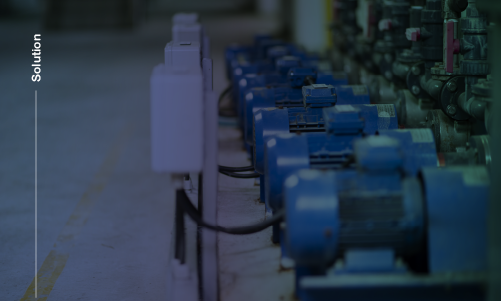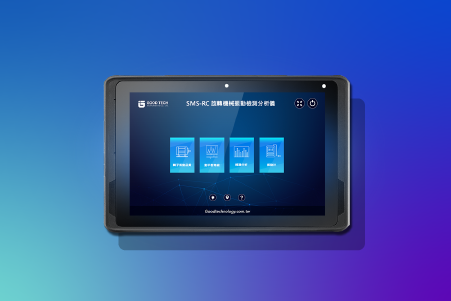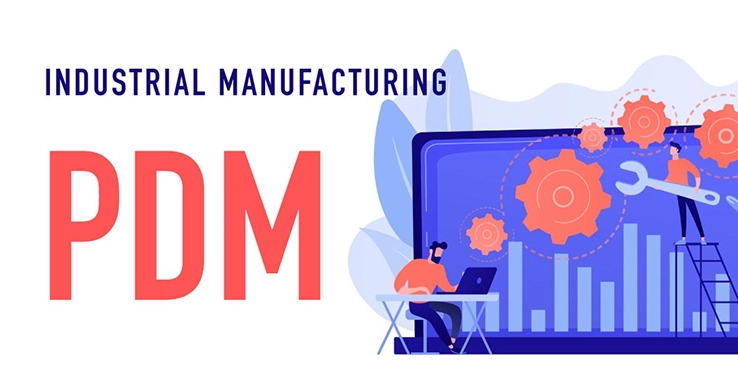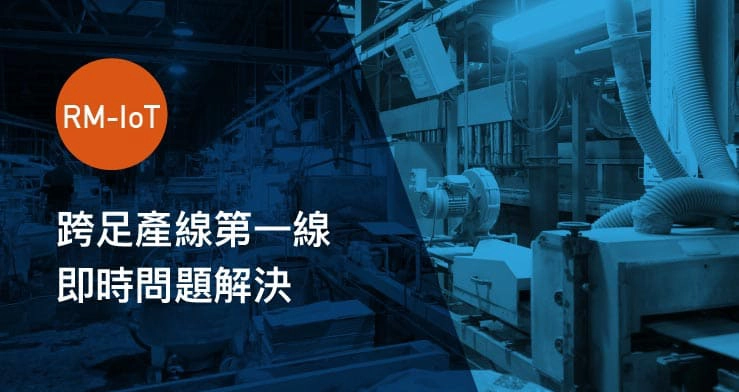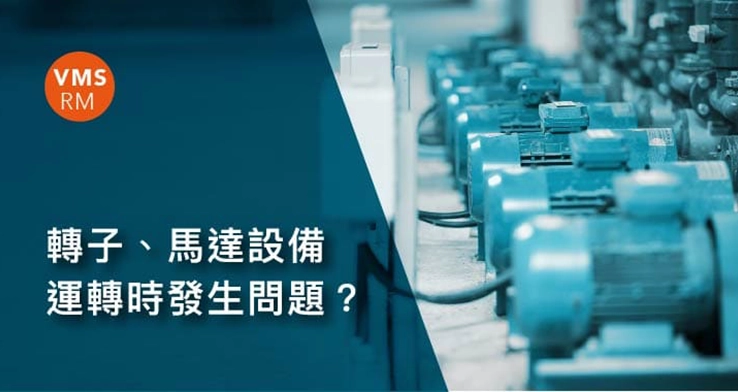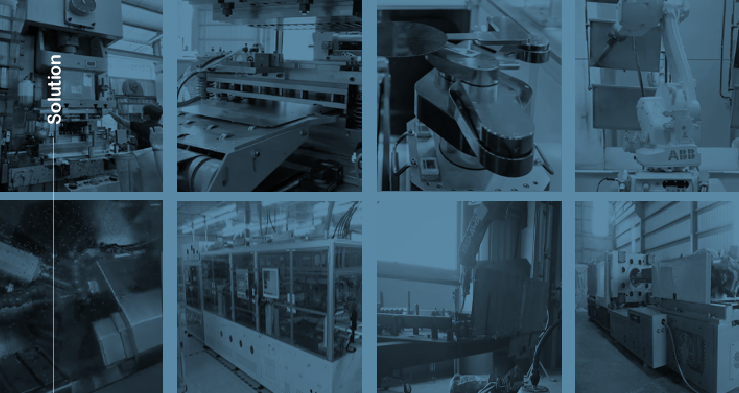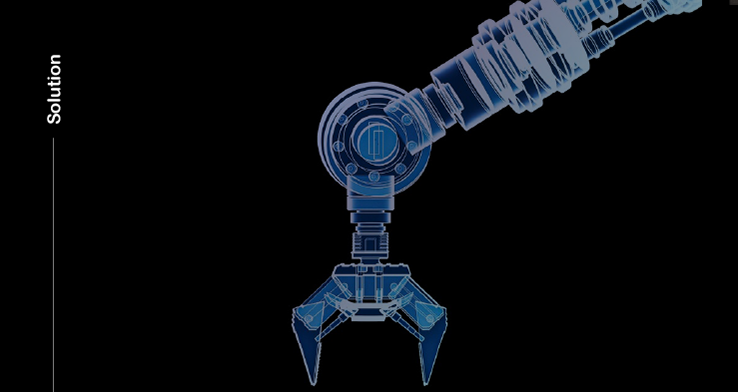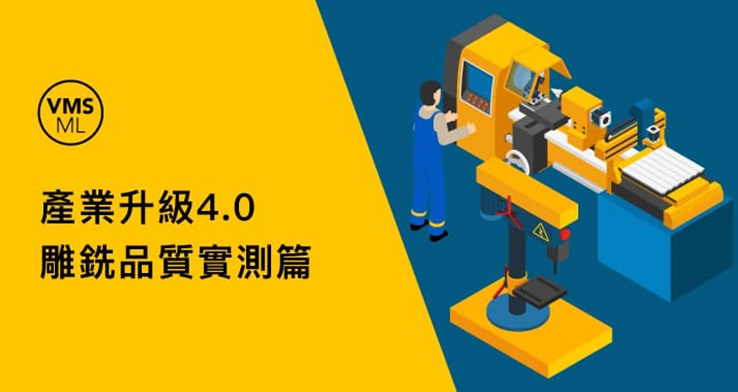Common Issues in the Production Line?
Application Field |ProductionThe quality of machining equipment directly impacts manufacturing costs. Start predictive diagnostics now to understand machining quality and ensure consistency in production line quality.
Implementation Motivation
Issues That May Occur in the Production Process?
Small and medium-sized enterprises (SMEs) account for approximately 97% of Taiwan's manufacturing industry.
As Industry 4.0 and smart manufacturing evolve, many large-scale production plants are moving offshore.
To maintain competitiveness, SMEs are transitioning to customized production,
adapting production lines flexibly, and introducing automation and smart workflows.
However, before transforming a manufacturing plant, companies must undergo a technical evaluation
and data-driven optimization adjustments, which can be a challenging phase.
For production line designers, measurement instruments that accumulate valuable parameter data
and original records are essential to identifying potential issues in the production process
and optimizing production parameters accordingly.
Production Cost "5-3 Model" & The Seven Types of Waste
Cost control is another major challenge in manufacturing plant management.
The "Production Cost 5-3 Model" categorizes costs into five types,
including three invisible costs: quality cost, capital cost, and waste cost.
Among them, waste cost is critical, aligning with Toyota’s Seven Wastes Theory
proposed by Taiichi Ohno. These seven wastes include:
1. Waiting Waste
2. Transportation Waste
3. Defective Product Waste
4. Motion Waste
5. Processing Waste
6. Inventory Waste
7. Overproduction Waste
Source: Think Tank Encyclopedia
How to Implement
How Should Production Equipment Be Monitored?
The previously mentioned wastes from defective products, motion inefficiencies, and excessive processing can actually be reduced by understanding the quality of machinery. Implementing predictive diagnostics in advance can significantly lower these waste costs in the factory.
Manufacturing Machining Equipment
Examples: Multi-axis machining centers, turning-milling machines, cutting machines, electrical discharge machines, engraving machines, grinding machines, die casting machines, CNC routers, stamping machines, thread rolling machines, hole drilling machines, etc.
Manufacturing Robotic Arms
Examples: Machining robotic arms, material handling robotic arms, welding robotic arms, wire bonding robotic arms, wafer handling robotic arms, adhesive dispensing robotic arms, etc.
Manufacturing Rotating Equipment
Examples: Thin film conveyor systems, tape winding machines, plastic injection molding machines, centrifugal equipment, coil winding machines, stator assembly rotor equipment, etc.
Cyclic Operation Equipment
Machinery with repetitive operations in manufacturing (excluding continuously rotating machinery), such as wire bonding machines, wafer handling machines, and adhesive dispensing machines.
Challenges in Implementation
How to Conduct Predictive Diagnostics for Machining Equipment?
Diverse Types of Machining Equipment
To meet production line requirements, various types of machining equipment are introduced,
such as multi-axis machining centers, turning-milling machines, lathes, milling machines,
cutting machines, electrical discharge machines, engraving machines, grinding machines,
die casting machines, CNC routers, stamping machines, thread rolling machines, and hole drilling machines.

In the manufacturing process, each production stage has standardized procedures and threshold requirements.
The operational efficiency of machinery directly impacts product quality.
For instance, as electronic devices become smaller and thinner,
ultra-high precision is required, leaving no room for minor deviations.
If a machining tool generates excessive vibration, it may cause misalignment or precision errors,
leading to massive product scrap.
Additionally, with increasing automation demands, many manufacturers introduce multi-functional machines
to streamline production and accelerate processes. However, these machines are often highly complex and costly,
making it difficult for maintenance personnel to quickly detect errors when a malfunction occurs.
This can disrupt production lines and result in significant financial losses.
Implementation Goals
Ensuring the Quality of Machining Equipment in Manufacturing
# Detect Minor Process Anomalies and Reduce Defect Rates
Precision is a fundamental requirement in manufacturing.
To reduce manufacturing costs and increase productivity, companies must closely monitor the operating status
of their equipment during production. Wear and tear are inevitable, but by systematically tracking each component
and implementing scheduled maintenance, machines can be kept in optimal condition, minimizing defect rates
caused by non-human factors.
# Reduce Maintenance Costs and Extend Equipment Lifespan
Many factories lack a structured maintenance plan, often due to uncertainty regarding equipment conditions.
Some factories simply outsource maintenance to the original manufacturer, spending large amounts on maintenance
without clear insight into its actual benefits. By accurately assessing equipment health, companies can allocate
maintenance budgets more effectively and extend the lifespan of their machines.
# Rapidly Analyze Equipment Anomalies and Save Troubleshooting Time
Whether it's on-site repair personnel in production facilities or maintenance engineers at manufacturing sites,
diagnosing and repairing complex machining equipment is time-consuming. Monitoring tools can assist
maintenance teams by reducing troubleshooting time and workload, allowing machines to resume operation sooner.
# Provide Raw Data for Machine Adjustments
Production line optimization and intelligent manufacturing require accurate machine measurement data.
Without this data, technical personnel can only rely on experience-based adjustments.
Additionally, with the increasing demand for customized orders, production lines require multiple testing phases,
leading to product loss and unnecessary cost increases.

Reduce Defect Rate in Production Line

Lower Maintenance Budget

Save Troubleshooting Time

Provide Raw Data
How to Implement
Detecting Machining Equipment in Manufacturing
There are various types of machining equipment in manufacturing, and their operating mechanisms differ. By monitoring mechanical vibration quality, we can assess the health of the machining process. Goodtech introduces the VMS-PM Mechanical Dynamics Analyzer,
which quickly identifies component issues and helps enhance machine intelligence. Users can utilize data-driven optimization to improve equipment performance while maintaining machine quality. For complex multi-functional machines, the VMS-PH Equipment Dynamics Analyzer can pinpoint problem areas with greater accuracy.
VMS-PM Mechanical Dynamics AnalyzerThe VMS-PH Equipment Dynamics Analyzer is ideal for diagnosing complex multi-functional machines, providing precise fault identification.
VMS-PH Equipment Dynamics Analyzer
Challenges
How to Monitor Robotic Arms in Manufacturing
Processing, Transport, and Welding Robotic Arms
To improve production line efficiency and product yield,
many manufacturers have invested in robotic arms.
The robotic arms used in production include processing arms, transport arms, welding arms,
wire bonding arms, wafer handling arms, and adhesive dispensing arms.
These robotic arms serve a wide range of applications.

The primary purpose of robotic arms is to replace human labor in dangerous, physically demanding, and precision-based repetitive tasks. For example, using robotic arms for welding in manufacturing can prevent accidents caused by human errors while ensuring greater precision and speed. However, to ensure optimal performance, robotic arms must be fine-tuned using precise programming parameters, combined with monitoring systems that detect motion, and continuously tested and adjusted for optimal operation.
Implementation Goals
Ensuring Quality of Various Robotic Arms in Manufacturing
#Establish standard guidelines to ensure production line quality standardization
Robotic arms specialized for manufacturing play a critical role in production processes,
where motion accuracy directly impacts product yield and quality consistency.
By establishing standardized models and setting threshold values,
it is possible to assess the accuracy of each motion in the manufacturing process,
ensuring consistent and standardized product quality.
#Collect meaningful data to optimize the manufacturing process
Since robotic arms in production replace human labor for complex or precision tasks,
it is essential to integrate object variables and quantifiable data into the system.
By using machine vibration fluctuations as a quality indicator,
data collected through edge computing and process control systems
can be analyzed and optimized for process improvements.
#Detect timing anomalies in robotic motions and make instant corrections
Production lines often operate under strict cost constraints,
where reducing defect rates is a top priority.
When robotic arms perform various tasks,
they must be able to immediately detect any anomalies in motion timing,
identify the root cause, and take corrective action.
If an anomaly impacts product quality,
the system should immediately trigger alerts and stop the production line
to prevent further defects.
#Long-term monitoring of robotic arm quality with scheduled maintenance
Since robotic arms in production perform complex and repetitive movements,
continuous monitoring is required to predict potential failures, wear, misalignment,
and other mechanical deviations.
By combining long-term quality monitoring with trend analysis,
it is possible to schedule maintenance proactively and extend the lifespan of the equipment.

Standardization of Production Line Quality

Collection of Useful Data

Detection of Motion Anomalies

Long-Term Robotic Arm Monitoring
Implementation Method
Robotic Arms in Production
The processing, transport, and welding robotic arms used in production help streamline production lines by executing tasks quickly and accurately, replacing human labor. Every minute motion in these processes directly impacts product quality.
The VMS-ML Machine Learning Intelligent Monitoring System developed by Gude Technology can detect robotic arm motion signals in real-time. Even with slight signal abnormalities, it can predict potential failures in advance, giving users ample time to prepare for part replacements or production scheduling adjustments. This helps prevent sudden malfunctions from disrupting production and causing financial losses. Additionally, it effectively prevents quality issues that may arise when machines operate under abnormal conditions.
VMS-ML Machine Learning Intelligent Monitoring System
Execution Challenges
How to Diagnose Rotating Equipment in Production
Processing Machines with Rotational Characteristics
The production sector uses a variety of manufacturing processing machines,
among which rotating equipment includes film conveyors, winding machines,
plastic pellet injection molding machines, centrifugal force equipment, coil winding machines,
and stator assembly machines.

These machines operate based on rotors driving conveyor belts to transport films or materials, while others utilize rotational characteristics for centrifugal force or injection molding applications. The most critical factor in such equipment is whether the rotation operates smoothly and how it impacts product quality. For example, in a film conveyor, if the rotor is unbalanced, it may lead to uneven force distribution on the film roll, causing uneven tension, material misalignment, or even production line stoppages.
Execution Goals
Ensuring the Quality of Rotating Equipment in Manufacturing
#Prevent Unexpected Failures and Ensure Product Quality Consistency
Various rotating equipment used in production directly impacts production line operation and product quality.
Abnormal vibrations and rotational imbalances can disrupt the manufacturing process and introduce variability in quality.
To minimize such risks, strict monitoring of operational quality is essential to ensure production stability.
#Extend Equipment Lifespan and Optimize Maintenance Scheduling
In production lines incorporating machines with rotational movement,
downtime for maintenance can lead to reduced production efficiency or increased product loss.
By accurately assessing equipment quality, scheduled maintenance can be optimized to avoid unnecessary downtime and extend the lifespan of core rotating machinery.
#Built-in ISO Standards for Real-Time Quality Assessment
The software system includes built-in ISO quality standards for rotating equipment,
allowing operators to easily understand the quality status of the equipment without technical expertise.
It automatically evaluates vibration quality based on ISO standards and measurement data,
while also offering historical data storage and report generation capabilities.
#Monitor Equipment Status in Real-Time and Send Alerts for Anomalies
Rotating equipment used in production differs from standard machining equipment
in that stoppages during rotation or material transport can result in significant raw material waste.
Therefore, a monitoring system is crucial to detect anomalies early and prevent unexpected operational disruptions.

Standardization of Production Line Quality

Clear Maintenance Scheduling Plan

Real-Time Rotor Quality Assessment

Sending Anomaly Alerts
Implementation
Monitoring Rotor Equipment in Manufacturing
In manufacturing, rotor equipment plays a crucial role in ensuring smooth operations and consistent product quality. The stability of rotational motion and the transmission process significantly impact production efficiency. By continuously monitoring vibration data during operation, users can assess rotor quality trends and detect potential issues early. Additionally, a portable diagnostic tool can be used for detailed inspections.
GoodTech offers the RM Rotor Health Monitoring System, which simplifies monitoring by collecting data and visualizing trends. This allows users to evaluate quality conditions in real-time and optimize maintenance schedules, preventing unexpected equipment failures.
Rotor Health Management SystemTo quickly analyze and identify the root cause of equipment anomalies, users can utilize the SMS-RC Rotating Machinery Vibration Diagnostic Analyzer, a portable measuring instrument designed for detailed inspections.
SMS-RC Rotating Machinery Vibration Diagnostic AnalyzerChallenges in Execution
How to Monitor Repetitive Cycle Equipment in Production?
Non-continuous Motion Processing Equipment
To improve production line efficiency and product quality, automated production equipment is essential. The repetitive behavior machinery used in manufacturing includes wire bonding machines, wafer handling machines, dispensing machines, and other non-continuous motion processing equipment.

These machines cover a wide range of applications and are primarily designed to replace labor-intensive repetitive tasks or cyclic processes. For instance, wire bonding machines used in manufacturing continuously bond metal wires and lead frames in a cyclic manner. The reliability of such equipment plays a critical role in maintaining production quality and process stability.
Execution Goals
Mastering the Quality of Repetitive Cycle Equipment
#Establish Standard Regulations to Ensure Line Quality Standardization
Manufacturing machines that execute repetitive actions play a crucial role in production, often handling large-scale and critical tasks. The accuracy of their movements directly affects product yield rates. Establishing standardized operational models and setting threshold values helps evaluate the accuracy of each action, ensuring consistency and standardization of production line quality.
#Collect Useful Data to Optimize Manufacturing Processes
Machines with repetitive actions in production lines are designed to replace human labor for complex or precise operations. To achieve this, it is necessary to incorporate variables related to the object being processed and quantified data while integrating human experience-based decision-making. Based on existing measurement standards, vibration variations in machinery can serve as quality indicators, and by leveraging edge computing and process control systems, collected data can be adjusted and optimized.
#Detect Abnormal Timing Sequences and Provide Instant Correction
Cost management is a crucial concern in production environments. To reduce defective product rates, machines executing repetitive actions must be able to immediately detect anomalies, identify their causes, and evaluate their impact. If an issue is found that may affect product quality, the system should generate real-time alerts, stop the machine immediately, and carry out corrective actionsto eliminate abnormalities.
#Monitor Equipment Quality Over the Long Term and Schedule Maintenance Appropriately
Repetitive cycle machines in production lines often feature complex cyclical operations, making it essential to monitor their health status, predict potential mechanical failures, degradation, or operational shifts. Implementing long-term quality monitoring and trend analysis allows companies to schedule timely maintenance and extend the lifespan of essential equipment.

Production Line Quality Standardization

Collecting Useful Data

Detecting Motion Abnormalities

Long-term Equipment Quality Monitoring
How to Implement
Repetitive Motion Cycle Equipment
Production-end equipment such as wire bonding machines, wafer handling machines, and dispensing machines assist production lines in executing tasks quickly and precisely while replacing manual labor. Every small movement in these processes has a direct impact on product quality.
Goodtech introduces the VMS-ML Machine Learning Intelligent Monitoring System,
which enables real-time monitoring of repetitive motion equipment. Even the slightest anomaly in motion signals
can be detected in advance, allowing for early identification of potential failure characteristics.
This provides users with sufficient time to prepare for component replacement or production scheduling adjustments,
preventing unexpected failures that could disrupt production operations and cause losses. It also effectively prevents
mechanical issues that may arise from operating under abnormal conditions.
Support
Other Manufacturing Equipment-Related Topics



